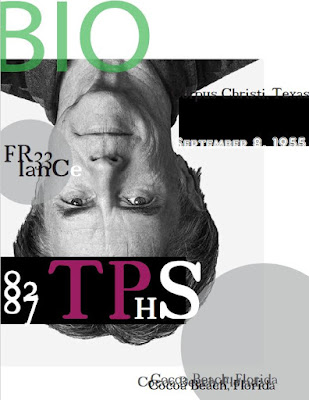This video was about the design industry and how designers
solve problems rather than making aesthetically pleasing art. It talked about
UI and UX, art, and companies that are at the forefront of the design movement.
I was really intrigued when they talked about Facebook’s creative team and
their work environment. Facebook has an open floor plan, allowing for employees
to collaborate and work alongside each other. I thought this was interesting
because I always pictured everyone to have their own office, but instead it is
a big are where any and every one can see watch other and their work. I liked
this idea because I love to ask for help and/or opinion of my colleagues, and
working together always seems like a better solution to any problem. I was also
really intrigued by this notion that we are problem solvers as designers,
rather than artist. We make products/flyers/logos/etc. more functional, and
easier to read and understand. Our work has a purpose. All in all, I really
like the film and it taught me a lot about the professional industry of design.
Friday, May 26, 2017
Hierarchy Lesson
In this video, Ina Saltz talks about the use of Hierarchy
and how it is important to the designer and reader. She explains how important
positioning, size, weight, color, contrast, and orientations are. Hierarchy
allows the reader to follow a design and grasp the information in an orderly
manner. Title and other important information should be the first thing a
reader notices. Designers make this happen by using hierarchy techniques to
make these important factors pop. Techniques such as making the title a
different color, changing the size or weight of the typeface, or even positioning
the text in a place which seems “normal” to the reader (read top-down,
left-right). One thing that really caught my eye was when Saltz explains typographic
furniture. Using rules, lines, and other small graphics can help the reader
differentiate important information on a page without having the design be too clustered.
This gives the readers breaks and can unify a design. All in all, this video
was very informative. Hierarchy is one of the most important items to a design,
and it is what makes the reader follow a specific trail a designer has set for
them.
Creative Inspirations: Kit Hinrichs
In this video, Kit Hinrichs talks about his history with
design, along with explaining how important it is to make things clear and
understandable as designers. He attended Art Center in Los Angeles, California.
During his time in Los Angeles, he met a lot of different people and learned a
lot about design and design styles. He later joined the Marine corps, followed
by Hinrichs moving to New York. After New York, he moved to San Francisco,
where he established Hinrichs Design Associates. He later became a partner with
one of the most influential design firms in the US, Pentagram. He finally left
Pentagram and established his own studio, Studio Hinrichs in San Francisco. Hinrichs’
career is really caught my eye because it shows his work ethics, even at 68
years old. I also found it interesting how he is a collector, collecting
numerous items from figures to flags. All in all, this video really showed me
how the love for design can go a long way. One should do design because it is
something they love doing; they want to make things better and easier to
understand, not just for aesthetic purposes.
Cropping Images
In this video, John McWade talks about cropping techniques
and how they are used to manipulate images in a design. He focuses on the 7
kinds of cropping, which consist of the hard crop, soft crop, split crop,
stickout crop, the knockout crop, false crop, and shape crop. Each crop
technique is unique and are used according to the feel the designer is trying
to illustrate through his design. I’ve used most of these crop techniques at
some point in my designs, but I’ve never realized how much I’ve favored some
techniques over the others. John showed me how using certain techniques can
strengthen a design through simple crops or even radical interesting ones. All
in all, this was a great, informative video that explained these techniques
very well.
Subscribe to:
Comments (Atom)


























